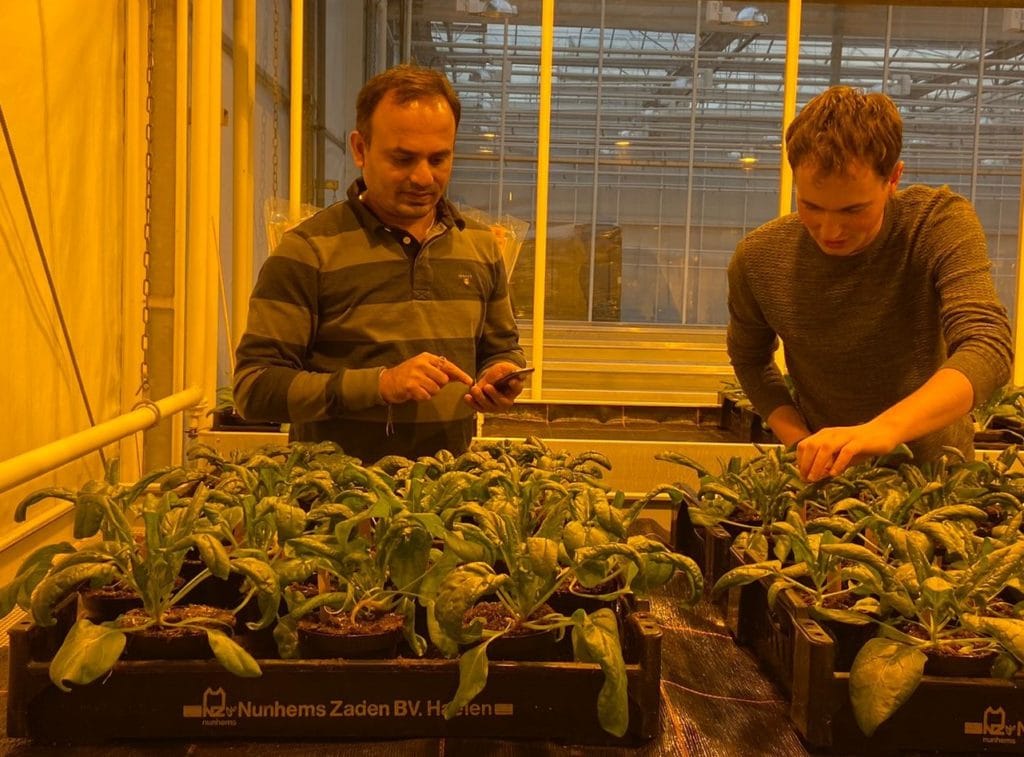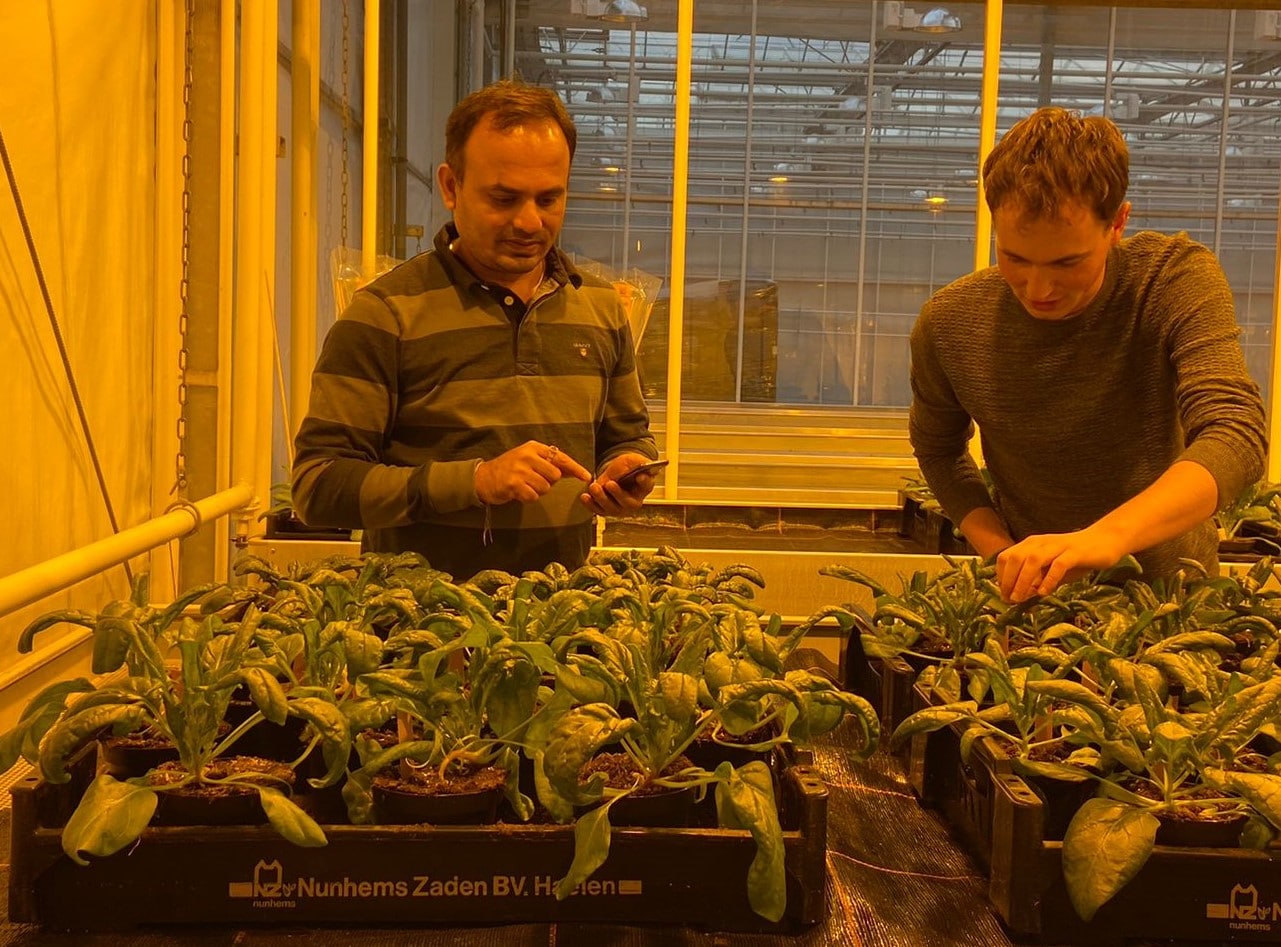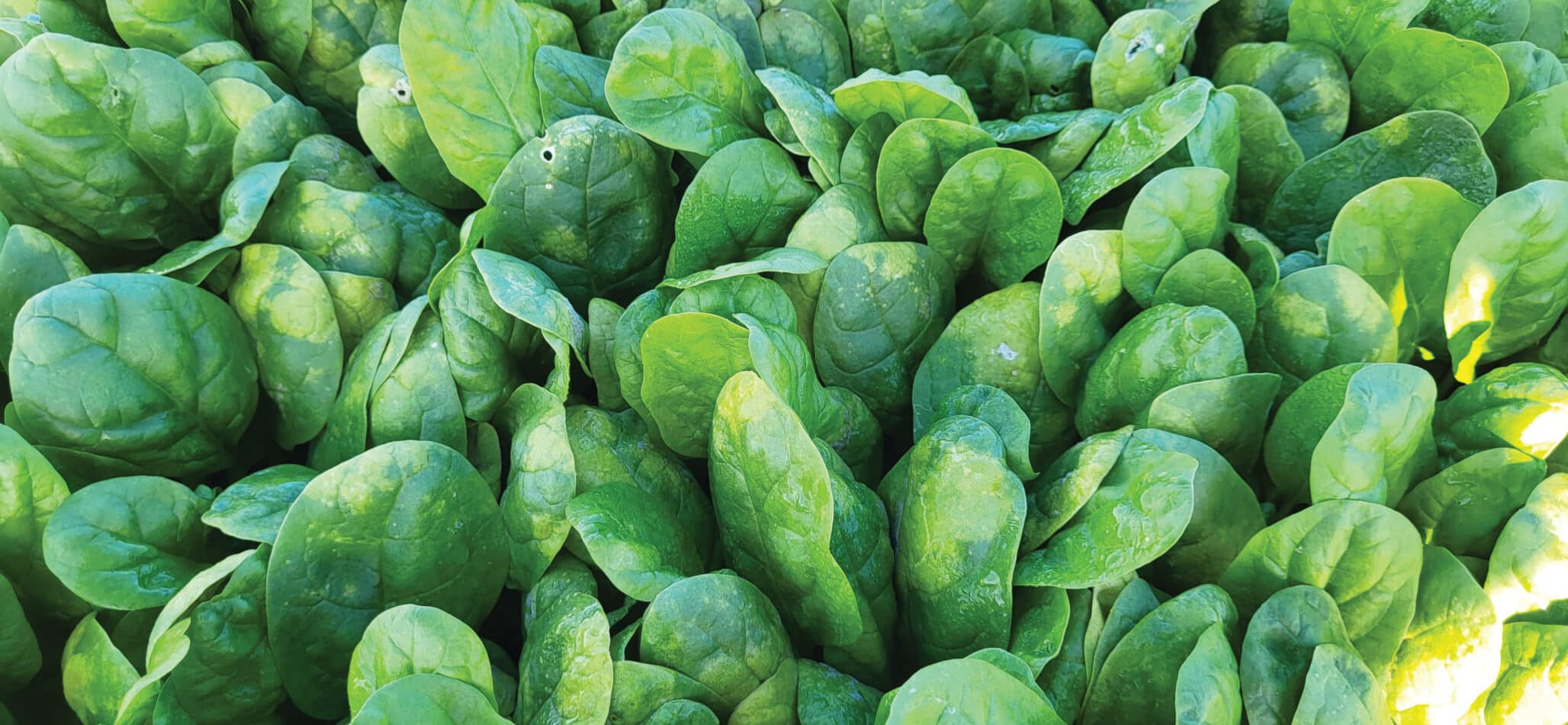Spinach has a relatively narrow genetic diversity, according to Dew Kumari Sharma, spinach breeder at Vilmorin-Mikado. Almost all breeders hunt for new sources of resistance from wild germplasm/genebank materials, making it a level ‘playing field,’ says Sharma.
The differences in genetic diversity at various breeding companies are, “about how long have you been hunting and being able to enrich the genetic diversity within your own program by other available methods,” adds Sharma.
There are two wild spinach species, Spinacia turkestanica and Spinacia tetrandra, that are mainly used as new germplasm sources. Johan Rijk reports that samples of these species have been collected by KWS during collection missions of the Dutch Centre for Genetics Resources (CGN), and his team also uses new technologies to discover new resistance sources and types.
In Raimon Laan’s, spinach breeder at Bejo Zaden, view of the CGN’s collecting missions of these wild species, the missions to Uzbekistan and Kazakhstan and to the Caucasus are especially interesting as valuable germplasm was collected.
“Of course, another option is to work with material from the competition and create new parent lines from there,” explains Laan. “But, as a lot of the new resistance patterns are patented, this could also be a reason not to do it. Another disadvantage is that the diversity of resistance genes used goes down by this strategy, and makes it is easier to break by the pathogen.”
BASF’s sources of diversity/variation range from crossable wild species and land races to obsolete varieties, reports Gowtham Prakash, senior scientist pre-breeding (lettuce and spinach). Syngenta is currently working WUR University and other companies in a consortium to acquire and test new germplasm.

ACCESS TO GERMPLASM
As everyone in the industry is aware, sufficient access to new germplasm in some crops has been affected by the European regulations on access and benefit sharing (ABS), but there are other factors that are affecting spinach germplasm availability.
KWS has good access to new germplasm right now, reports Johan Rijk, senior spinach breeder at KWS. At the same time, these new sources are rapidly decreasing. “So, new collection missions are needed, often in countries that are difficult to access,” he says. “ABS in itself is not so much of a problem, the problem is more the political (un)willingness of governments and institutes to collaborate and open up boundaries, or literally, borders to increase access.”
Prakash echoes these sentiments. Whilst BASF has very good current access to germplasm in gene banks like CGN Netherlands, IPK Germany and USDA GRIN, and so far, is feeling no restrictions due to ABS regulations, Prakash says that “of late, gene banks are experiencing difficulties in organizing collecting missions to the very countries which are considered as centres of diversity for spinach. These difficulties are due to political situations and lack of local collaborating partners to guide exploration.”
Roel Veenstra, Bejo Zaden’s crop research manager for brassica, lettuce, beans and spinach, reports that the genetic materials his firm has collected so far has been valuable in terms of new resistance genes, but that the limits are in sight. The right paperwork is challenging to secure for the collecting missions that are needed.
In terms of the effect of ABS on Bayer’s spinach breeding, “the European regulations together with other relevant international legislation on genetic resources have augmented the complexity, administration requirements and legal uncertainty,” says Ben Hunter, lead of the Global Spinach Collaborative Breeding Pipeline Team at Bayer Crop Science. “A framework that would facilitate access to novel germplasm in spinach would accelerate innovation.”

The European regulations, together with other relevant international legislation, on genetic resources have augmented the complexity, administration requirements and legal uncertainty.
For DeSeed’s part, Johansen explains that his company’s leadership has felt obliged to become member of the ILP platform to get access to patents. “We’re highly in favour of UPOV and plant variety protection,” he says. “We think it’s acceptable that a breeder can patent a new trait if indeed there is a true innovative breeding work behind this work.”
Read part one of this article here.
Read More About Spinach:
Popeye Was Right! Creating New Varieties in One of the Most Nutritious Vegetables
Rijk Zwaan Spinach Assortment Makes an Impression in Washington State University’s Stemphylium Study











